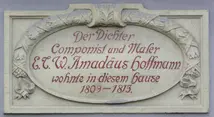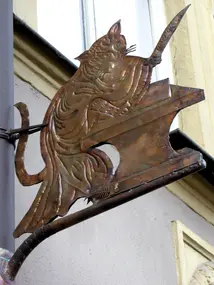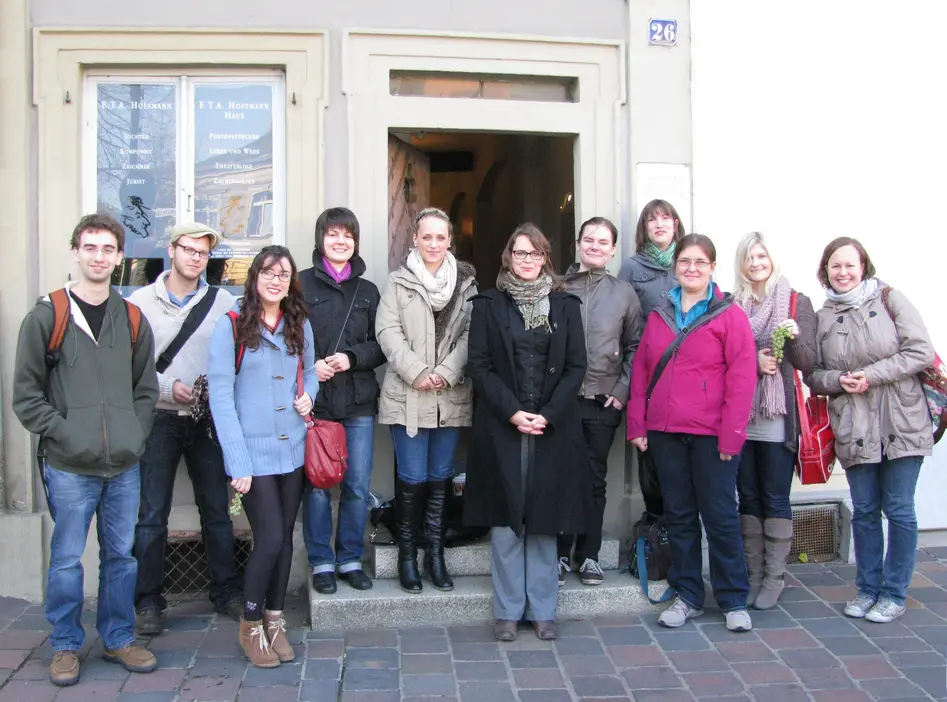Classes at the E.T.A.-Hoffmann-Haus, Bamberg
In the winter term 2011/12 the students of the seminar "Left in Ruins" took the opportunity to explore the E.T.A. Hoffmann Haus in Bamberg during their class on German and American Romanticism.
In this seminar, we took German and American Romanticism beyond the temporal limits of the literary period. Thematically, we focused on the ruin as a key symbol that remains closely associated with Romanticism as a literary period and cultural expression; in terms of literary texts, we read classics such as E.T.A. Hoffmann's “Das Majorat” (1817) and Heinrich Heine's Deutschland. Ein Winterm?rchen (1844), alongside John Steinbeck's Grapes of Wrath (1939) and Richard W. Jenning's Ghost Town (2009).
Squeezed-in between two decidedly larger and seemingly more impressive houses, the E.T.A. Hoffmann Haus is nevertheless remarkable. After all, one of the major representatives of German Romanticism inhabited its upper floor and attic when he came to Bamberg to work as a theater manager and music teacher. This legacy, together with its exquisite garden, makes a visit to this small museum more than worthwhile.
The E.T.A. Hoffmann museum opened its doors to us on two occasions. In October, Prof. Dr. Schemmel, head of the E.T.A. Hoffmann society in Bamberg, gave us a guided tour through the house and grounds that were inhabited by Hoffmann during his time in Bamberg (1809 – 1813).
Compared to Hoffmann as author of gothic tales and stories, very little is know about Hoffmann the shrewd caricaturist of his contemporaries and their weaknesses; but during the tour, we got a glimpse of the Romantic sense of irony in some of the images on display. We also learned how Hoffmann's growing disappointment with his life in Bamberg left a trace in many of his tales and even his musical pieces. At the end of the tour, one of the students took the chance to try his hands on a pianoforte in the attic that closely resembles the one used by Hoffmann two hundred years earlier.
In November, we returned to the Hoffmann Haus to use the museum's workshop as a classroom. Surrounded by memorabilia of the author and his times we had a chance to discuss Hoffmann's texts and its ongoing relevance in a rather unusual context; the atmosphere of his former home greatly enhanced our passion for discussing 19th-century literature in the 21st century, and for experiencing history today.
We want to thank Dr. Schemmel again for his generous invitation and assistance.
Photos and text by Nicole K. Konopka



